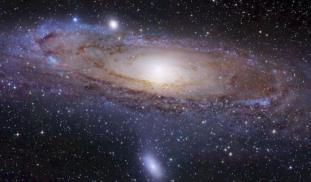Please wait...
About This Project
We derive the ages and other properties of stars by combining theoretical astrophysics, data from the best telescopes, Bayesian statistical analyses, and advanced computational techniques. We have developed an algorithm that allows us to combine the age information from multiple white dwarf stars to derive the age of our Galaxy. We request funds to support converting our algorithm to high-performance software code. From this we will both derive the age of the Galaxy as well as make our code publicly available for other research groups.

Browse Other Projects on Experiment
Related Projects
Using seaweed to assess nitrogen pollution levels around the coast of northern England and Scotland
Coastal ecosystems are under environmental strain caused by nitrogen (N) loading by human activities such...
Walruses, Whales, and Worms: exploring marine mammal parasitology
The goal of this research is to identify parasitic infections in marine mammals like seals, whales, and...
How have genetics of African Lions changed over the last century?
In this study, we will compare genetic information from 100-year-old lions preserved in museums to modern...


